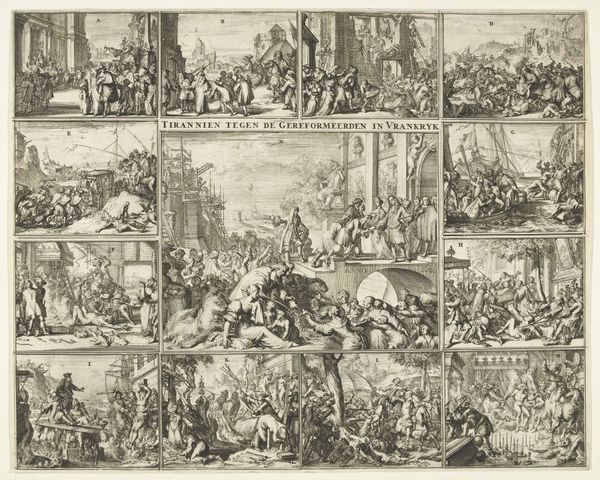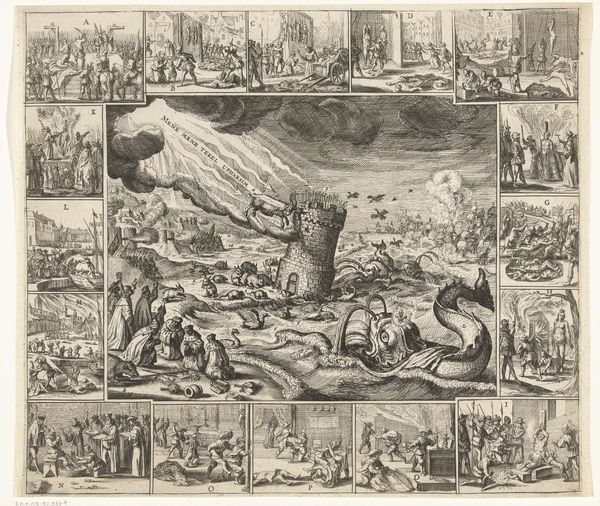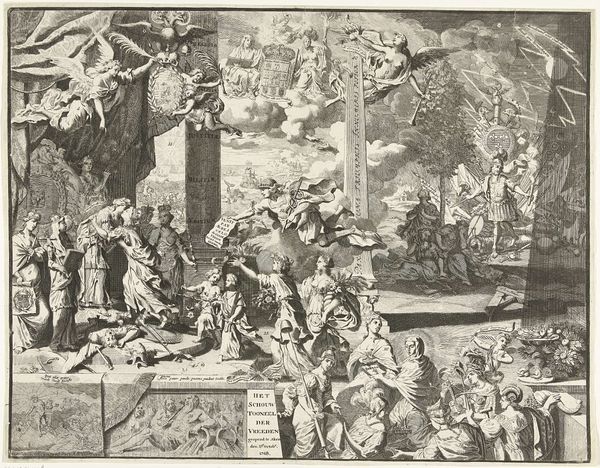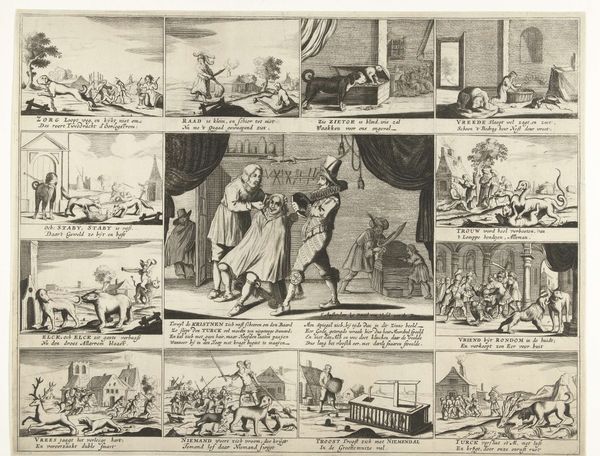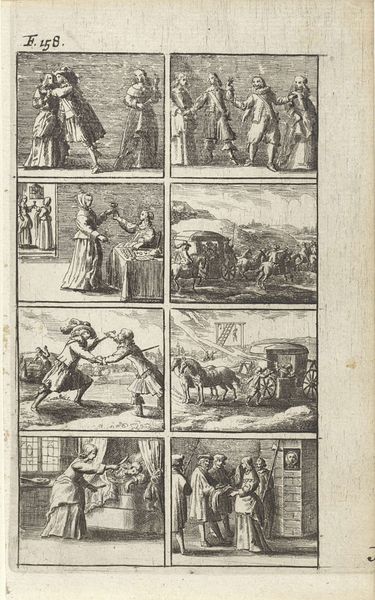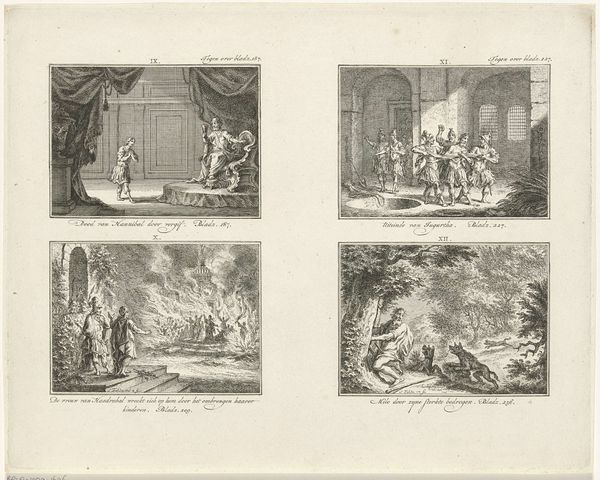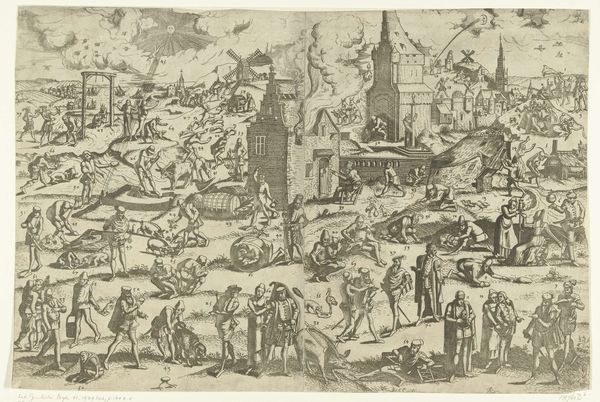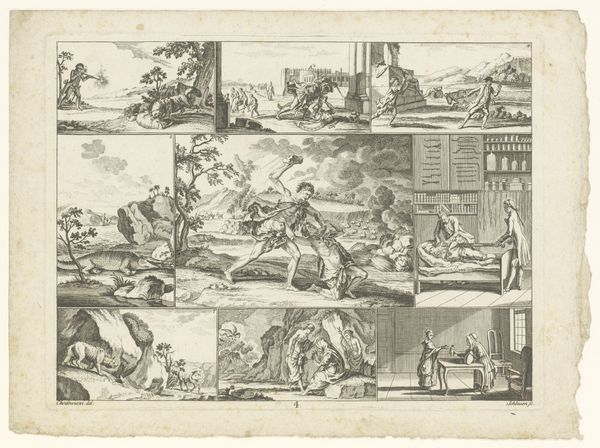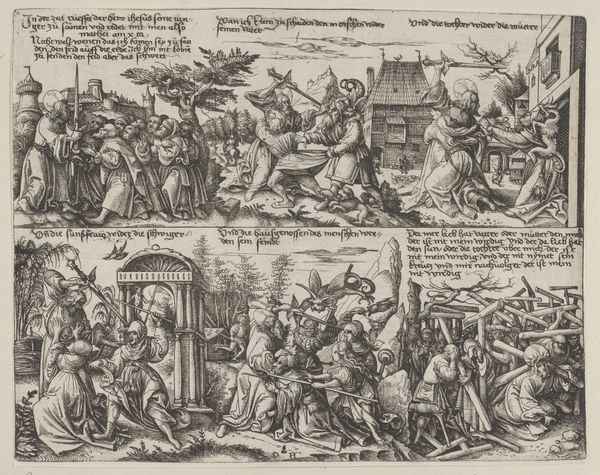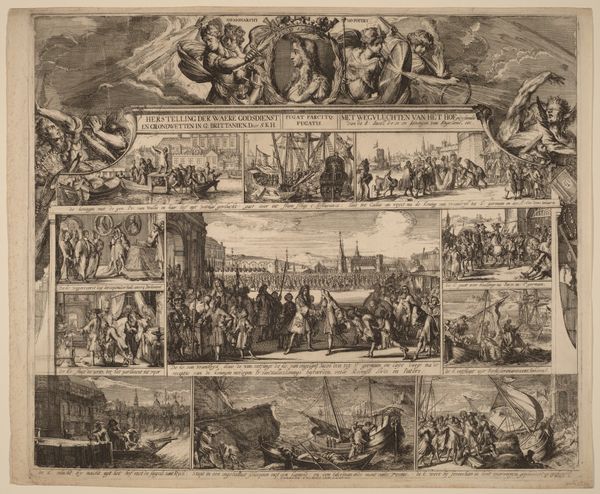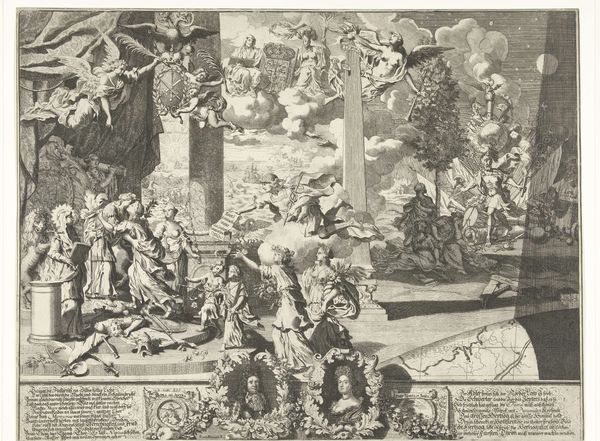
print, etching, engraving
#
medieval
#
narrative-art
# print
#
pen illustration
#
etching
#
figuration
#
genre-painting
#
history-painting
#
engraving
Dimensions: height 246 mm, width 338 mm
Copyright: Rijks Museum: Open Domain
Editor: This etching, "Wreedheden jegens de Ierse protestanten, 1642," depicts various acts of violence. The piece, created between 1641 and 1642, is stark, especially with its monochrome palette. How does its historical context influence how we should interpret it? Curator: Given the inflammatory nature of the subject matter, the historical context is critical. This print reflects a very specific, and likely biased, narrative of the Irish Rebellion of 1641. It aims to depict atrocities committed against Protestant settlers, furthering a particular political agenda and shaping public opinion. Notice how the artist groups and labels each scene? What effect does that have on the viewer? Editor: The labels give a sense of documentary evidence, even though the images are clearly dramatized. It's like a series of accusations presented as fact. Do you think the artist was trying to create a sense of moral outrage? Curator: Absolutely. These prints were often circulated as propaganda. Consider who might have commissioned it, who the intended audience was, and what their motivations were. These images served to dehumanize the Irish Catholics and legitimize further violence and oppression. Do you think seeing something like this displayed in the Rijksmuseum changes the intention from the original historical intent? Editor: I think putting it in a museum gives us space to examine it critically, to think about the dangers of propaganda and the way history can be manipulated through art. Seeing it today, hopefully, we analyze it instead of just internalizing a message of hate. Curator: Precisely. The museum context transforms it into a historical artifact that we can study, contextualize, and learn from, even as we acknowledge its problematic origins. Editor: That’s a great point. Thanks for sharing your insight!
Comments
No comments
Be the first to comment and join the conversation on the ultimate creative platform.
